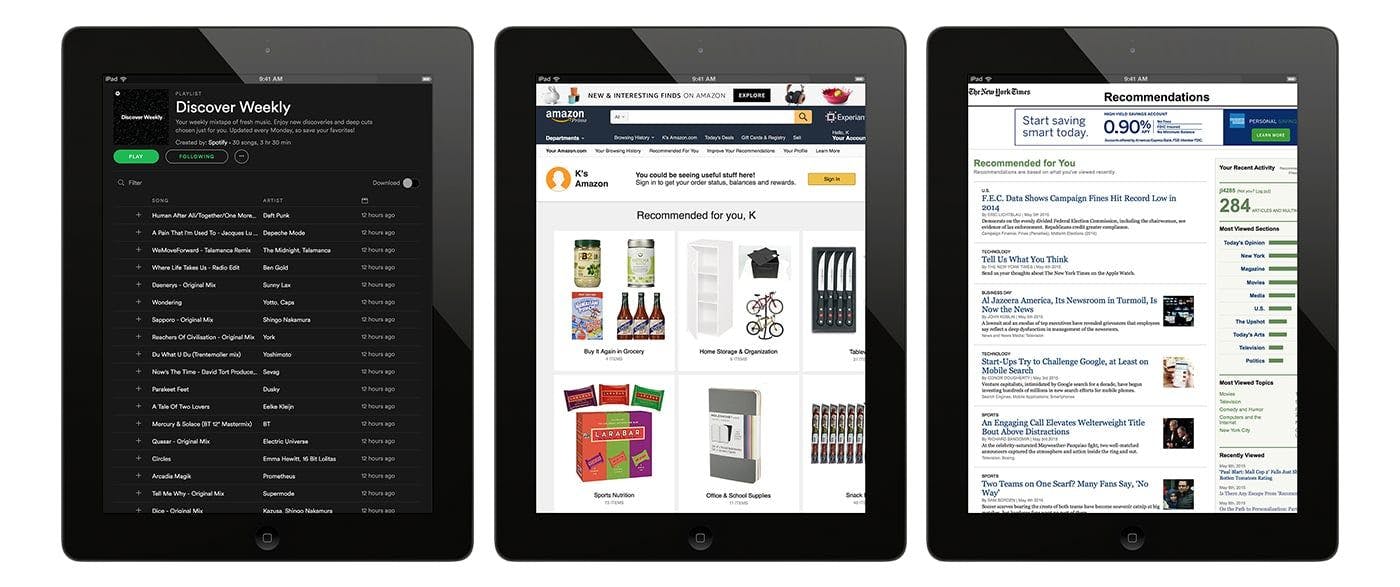Harnessing the Power of Behavioral Targeting
By Kayla Koterbay
How great is it when you discover an amazing new band based on Spotify’s recommendations?
New research shows that it's not only streaming music sites that should be paying attention to user preference. By taking advantage of consumer behavioral data, advertisers have the opportunity to deliver more relevant ads based on users' preferences, which can benefit brands significantly.
Think of an expertly targeted ad as the equivalent to Amazon's Book Recommendations, The New York Times Recommended For You, or Spotify's Discover Weekly. These tools are curated recommendations based on consumers' behaviors and preferences, which are generally seen as useful and welcomed. If advertisers can leverage the same behavioral and preferential data to better target consumers, consumers will respond positively and maybe even thank them.

Relevant ads based on behavioral data can encourage better brand affiliation and product purchases. A recent study conducted by Ohio State University, published in the Journal of Consumer Research, found that under certain circumstances when an ad is served to an individual based on their online behavior and viewing habits, that individual is more likely to view the brand's values as their own and ultimately more likely to purchase the product.
This phenomenon was only true when the individual was aware that the ad was targeted at them based on their online behavior. When that happened, the individual saw the targeted ad as reflective of their own characteristics because the ad told them that, based on their browsing history, they had those characteristics. They accepted this information and saw themselves as having the traits reflected in the ad. What's more is that this shift in how they saw themselves increased their interest in the advertised product.
Consumers are constantly combing the Internet for new music to listen to, new restaurants to try, new stories to read, or new cereals to eat. Personalized and recommendation-based subscription services have become increasingly popular. Companies like Stitch Fix and ClubW have built their entire services around the notion of curated and personalized recommendations for the things you want (clothing and wine, respectively, in this case).
Advertisers have the opportunity to harness the power of consumers' online behavior to recommend another relevant option: for example, advertisers can target consumers who use an app like Postmates for buying alcohol and provide them with an ad for an app that specializes in beer and spirits delivery—then that ad moves from being interruptive and irrelevant to useful and informative.
This is great for the consumer who gets a sweet personalized recommendation, and fantastic for the brand who makes a sale. It also makes good advertising sense, as spending money on ads that are ignored or, worse, irritate potential consumers is counter productive. As advertisers, we owe it to ourselves, the brands we represent, and the consumer to deliver advertising that is relevant and useful.
If you'd like to see examples of how Traction uses behavioral targeting to move consumers from interest to conversion, contact us here .

As a core member of the media team, Kayla ensures that all clients are reaching the most qualified and valued consumers with their advertising. She lives for efficiency, preferring to cut through industry speak and focus on the heart of the project. She loves meeting new people and collaborating, but you'll have to agree to disagree if you don't love the A's. When she's not hashing out great deals on ad buys she can be found at home chilling with her kitties or in the climbing gym conquering the latest routes.
A recent study from consultancy, Russell Reynolds Associates, shows that CMO turnover has reached record highs.
Yes, retail is about convenience, ease, and seamlessness, especially when it comes to categories associated with utility.

Traction's work for Lenovo has made the Shortlist in the 2015 IAB MIXX Awards!